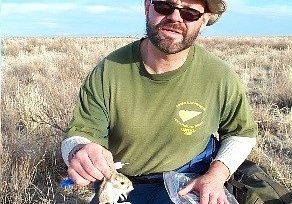Click a link below for details.
The longnose leopard lizard (Gambelia wizlisenii) is the largest lizard in Colorado. It lives along the western margin of the state in arid shrublands, feeding on invertebrates, other lizards, and the occasional mouse. CNHP investigated what role invasive grasses have in altering leopard lizard habitat use by fitting them with telemeters and following them. Leopard lizards appear to avoid areas where invasive grasses, like cheat grass (Bromus tectorum), dominate the desert systems where they live (Schorr et al. 2011). Knowing how species respond to plant invasions can help land managers forecast and mitigate the impacts of such changes on the landscapes they manage.



Left-click to view, and right-click to download.
Below are links to Longnose Leopard Lizard Reports
The use of capture success has errantly been used as a predictor of habitat quality. CNHP investigated this misconception by studying small mammal communities in various habitat types at Pueblo Chemical Depot. Mark-recapture studies show that survival rates of small mammals, such as Ord’s kangaroo rats (Dipodomys ordii), deer mice (Peromyscus maniculatus), and northern grasshopper mice (Onychomys leucogaster) differ from capture rates in different habitats, and original interpretations of “high quality” habitat based on capture success are misleading (Schorr et al. 2007).







